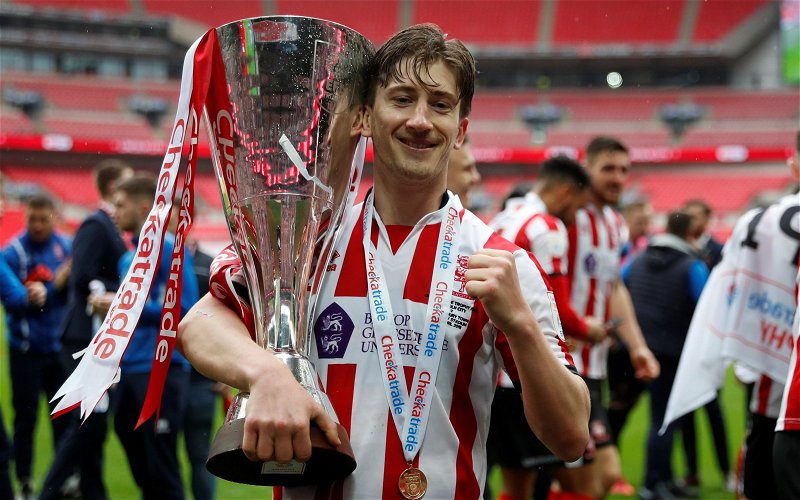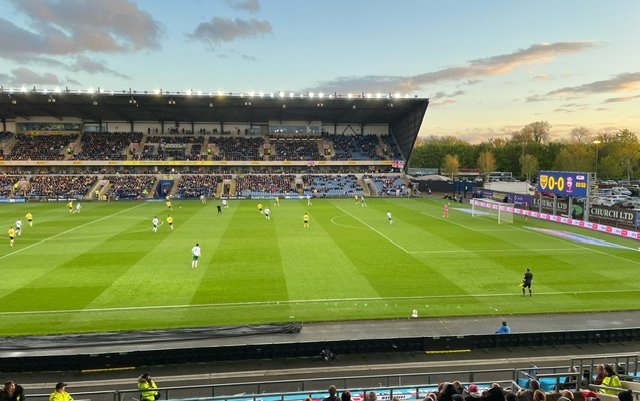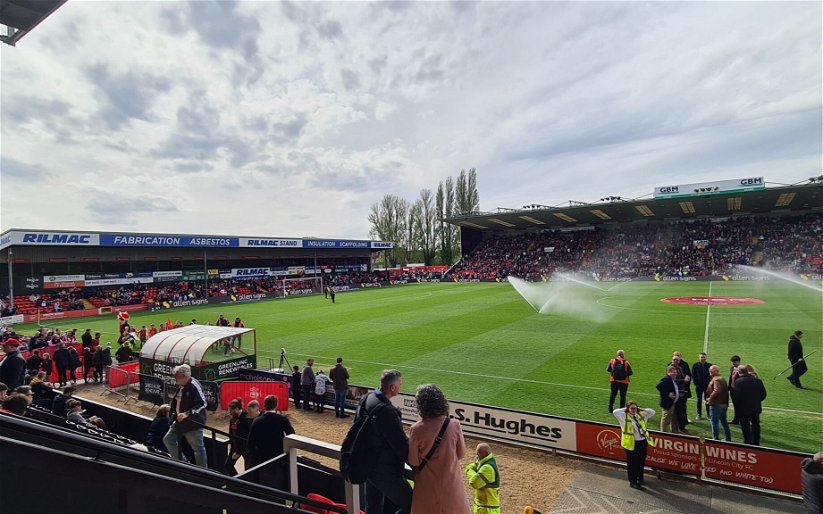1. Which Lincoln City goalkeeper joined Boston United and appeared in their first ever game at left back?
Here is the answer as originally written:
Charles Blakey. Blakey made his debut for Lincoln in the War League game at home to Barnsley on 5 February 1916 and appeared intermittently throughout the war. When the Football League recommenced in 1919, he was City’s first choice keeper as Lincoln finished second from bottom of Division Two and were not re-elected. He had the distinction of making his first-class City debut in West Ham United’s first match as a Football League club on the opening day of the 1919-20 season, but the slightly more dubious distinction of conceding an alarming 31 goals in his first 8 games. He lost his place as City hurtled towards relegation and never appeared for the club again. After spells in local non-league football, he washed up at the newly-formed Boston United during the summer of 1931 and appeared throughout the season at either left back or fullback.
However, Imphistorian casts doubt on the legitimacy of the story, as follows:
Dr Fox lists the Boston United player for the opening game of 1933-34 as Charles HS Blakey but looking through the British Newspaper Archive, the fullback named Blakey signed for Boston Town around August 1924 having previously played for Boston/Skirbeck St Nicholas. This player can be traced with St Nicholas back to the time when the ex-Lincoln player was playing in goal for Boston Town and is, therefore, a separate player. The full-back continued to play for Boston Town (mostly in the reserves) and then Boston United. CHS Blakey had a spell as goalkeeper for Boston Town but by 1933 he would have been in his late 30s and was a relatively successful businessman and is unlikely to have been playing football.
2. When the Football League was suspended for the Second World War after three games of the 1939-40 season, what would City’s fourth game have been?
Away to York City. The fixture list for 1946-47 was the same as the abandoned one from 1939-40.
3. Who played with Billy and married Lily?
City right half Charlie Pringle, who played alongside the legendary Billy Meredith during his six seasons playing for Manchester City and married Meredith’s eldest daughter Lily (Lilian). He was also selected by Meredith to play in his testimonial match against a combined Rangers & Celtic team on 29 April 1925, which was Meredith’s final match at the age of 50.
One of the most illustrious players ever to appear for the Imps, Charles Pringle had an interesting career that was delayed by the First World War. Capped by Scotland while playing for St Mirren in 1921, he moved to Manchester City in the summer of 1922 and played every game for them in their final season at Hyde Road. He appeared regularly the following season – their first at Maine Road – including in front of their record gate of 76,166 against Cardiff. In 1925-26 he experienced the novel achievement of playing in the FA Cup Final (lost 1-0 to Bolton) and being relegated despite scoring 120 goals in all competitions. He finally scored his first goal for the club in his 162nd game, a 2-1 win at Oldham in September 1926 as City missed promotion on goal average. His final season at Maine Road in 1927-28 saw the club promoted as Second Division champions. He made a total of 215 appearances for them, scoring just the one goal, and captained them for three years.
After a short spell with the fledgling Manchester Central (where Billy Meredith was coach) and twice narrowly missing promotion to the First Division with Bradford Park Avenue, Charlie arrived at Sincil Bank in the close season of 1931. Considered well past his best at the age of almost 37, Pringle rolled back the years to captain the Imps to the Third Division North title at the first attempt. He scored his only goal for the club on the final day of the season, an unexpected 4-3 defeat to lowly Hartlepools. In an eventful season, he witnessed Allan Hall’s record 41-goal haul (see last week’s quiz), Frank Keetley’s six-goal second-half salvo against Halifax (see our quiz from two weeks ago), and both expunged wins over Wigan Borough. Ironically, his first appearance for Lincoln in the FA Cup came against his former club Manchester Central at Belle Vue (won 3-0).
Life in the Second Division was always going to be a challenge at 38, and after a further 24 appearances, Pringle moved back to Manchester in February 1933 to play for Stockport before retiring at the end of the season.
An interesting footnote is that Billy Meredith’s younger daughter Winifred survived into her late 90s, and lived to see her father admitted to both the Manchester City Hall of Fame in 2004 and the English Football Hall of Fame in 2007.
4. Which City starlet was sold to First Division Liverpool, ironically scored twice on his debut against Grimsby, and failed to score again in his entire career?
Nineteen-year-old Ted Savage, who joined Liverpool for £2,750 on 5 May 1931 and scored his two debut goals against Grimsby at Anfield on 26 September 1931. Grimsby were relegated at the end of the season by a single point. The irony? Savage was from Louth and competed regularly for Grimsby Harriers Athletic Club.
Savage was played as an emergency striker in that game against Grimsby following an injury crisis at Anfield. In due course he was converted to a defender, which accounts for his poor scoring record thereafter.
Savage was sold to Manchester United for £1,500 in December 1937 after 105 appearances. His stay at Old Trafford was brief, making just 5 appearances as United were promoted back to the First Division at the end of that season. He lost his place the following season and slipped into the lower divisions with Wrexham in December 1938. Having made 26 appearances for Wrexham, his career was ended by the Second World War at the age of 27.
5. What surname connects a Lincoln City striker, an actress, a Hollywood casting director, and a recipient of the Queen’s Police Medal?
Trevis.
City’s Derek had two sisters and a brother:
* elder sister Di (Diane) Trevis is an actress and theatre director who appeared frequently on television throughout the seventies and eighties (The Sweeney, The Professionals, Hanover Street). Now 70, she runs drama workshops and is married to composer Dominic Muldowney. She published her autobiography ‘Being a Director: A Life in Theatre’ in 2011;
* younger sister Sarah Trevis is a casting director who has worked on a number of top Hollywood movies (Shallow Grave, Flight of the Phoenix, The Ghost And The Darkness). She was formerly married to actor Dougray Scott;
* brother Graham Trevis rose to the rank of Detective Chief Superintendent in the West Midlands Police Force, and was awarded the Queen’s Police Medal in the 1990 New Year’s Honours List.
Derek played for City for three years between 1970 and 1973, scoring 21 goals in 123 appearances including a memorable hat-trick against Exeter on 3 October 1970. Bert Loxley chose to play him predominantly as a striker, and he finished his first season at Sincil Bank with 16 goals. Despite that record, next manager David Herd preferred him in midfield and even at centre-half on occasion, meaning he scored very few for City after that. Notably, he scored on his City debut at Cambridge on 15 August 1970, which was Cambridge’s first ever game in the Football League, and also appeared in the famous Watney Cup match against Burnley. He later emigrated to America during the 1970s soccer boom and became a respected coach. He died of a heart attack in Sacramento on 21 December 2000, aged 58.
6. Which legendary Lincoln striker drove a Cadillac convertible in the 1930s?
The ever-flamboyant Jock Dodds, who bought the car in 1936 while playing for Sheffield United.
7. Which City player missed the Munich Air Disaster through injury?
Ian Greaves. In the immediate aftermath of the disaster, Greaves took over the left back spot vacated by United captain Roger Byrne and appeared in the 1958 FA Cup Final defeat to Bolton.
8. What is missing from this sequence: JA, AP, –, PF, BW, AW?
TM, for Tom Miller. The list is the six winners of the Player of the Season award during City’s non-league exile (Joe Anyon, Alan Power, Tom Miller, Paul Farman, Bradley Wood, Alex Woodyard).
9. Why did Nottingham Forest receive criticism from Lincoln City in August 1989?
They fielded a number of first-team players in a Midland League game despite it being essentially a third team fixture for them. The Forest team was:
Mark Crossley; Gary Childs, Tony Abrahams, Martin Clarke, Steve Chettle, Brian Rice, Toddy Orlygsson, John Sheridan, Tommy Gaynor, Lee Glover, Tony Loughlan; sub: Nigel Jemson.
Those names may not mean a lot to younger supporters, but eight were first-team regulars, two were full internationals, and three were U21 internationals. To emphasise the difference in standard, Nigel Jemson appeared as a substitute and scored a hat-trick in four minutes in a 9-1 win. City Reserves & Youth manager John Pickering drily called it, “…a lesson in how a First Division outfit can beat Fourth Division YTS players.”
City fans will recognise one name in particular – the underrated Tony Loughlan, who later had a season at Sincil Bank (1993-94).
10. What is this? How did it almost take City back to the Second Division?
The John Ireland Stand at Molineux, home of Wolverhampton Wanderers. The debt caused by the building of the stand in 1979 almost sent Wolves to the wall in the summer of 1982. Had they been wound up, their place in the Second Division would have been taken by the side finishing fourth in the Third Division – Lincoln City. A deadline-day rescue package brokered by television presenter and Wolves legend Derek Dougan saved the club, and Lincoln turned around and headed for the Conference instead.
Writer: Scotimp
Weekly Quiz: w/c 11 June – The Answers:https://t.co/aCZ5HNl96W#ImpsAsOne
— Vital Lincoln City (@VitalLincoln) June 19, 2018
https://www.facebook.com/VitalLincolnCity/posts/1726689490700622



